-
EXECUTIVE SUMMARY
-
1.1.
-
Market Overview
-
Key Findings
-
Market Segmentation
-
1.4.
-
Competitive Landscape
-
Challenges and Opportunities
-
Future
-
Outlook
-
MARKET INTRODUCTION
-
Definition
-
Scope of the study
- Research Objective
- Assumption
- Limitations
-
RESEARCH METHODOLOGY
-
Overview
-
3.2.
-
Data Mining
-
Secondary Research
-
Primary Research
- Breakdown of Primary
-
3.4.1.
-
Primary Interviews and Information Gathering Process
-
Respondents
-
Forecasting Model
-
Market Size Estimation
- Top-Down Approach
-
3.6.1.
-
Bottom-Up Approach
-
Data Triangulation
-
Validation
-
MARKET DYNAMICS
-
Overview
-
Drivers
-
Restraints
-
Opportunities
-
MARKET
-
FACTOR ANALYSIS
-
Value chain Analysis
-
Porter's Five Forces
- Bargaining Power of Suppliers
- Bargaining Power
- Threat of New Entrants
- Threat of Substitutes
- Intensity of Rivalry
-
Analysis
-
of Buyers
-
COVID-19 Impact Analysis
- Regional Impact
- Opportunity and
-
5.3.1.
-
Market Impact Analysis
-
Threat Analysis
-
WIND TURBINE GEARBOX MARKET, BY APPLICATION
-
(USD BILLION)
-
Onshore Wind Power
-
Offshore Wind Power
-
7.
-
WIND TURBINE GEARBOX MARKET, BY GEARBOX TYPE (USD BILLION)
-
Planetary
-
Gearbox
-
Helical Gearbox
-
Hybrid Gearbox
-
WIND TURBINE
-
GEARBOX MARKET, BY TURBINE CAPACITY (USD BILLION)
-
Below 1.5 MW
-
8.2.
-
MW - 3 MW
-
Above 3 MW
-
WIND TURBINE GEARBOX MARKET, BY END
-
USE (USD BILLION)
-
Power Generation
-
Industrial
-
Commercial
-
WIND TURBINE GEARBOX MARKET, BY REGIONAL (USD BILLION)
-
North
- US
- Canada
-
America
-
Europe
- Germany
- UK
- France
- Russia
- Italy
- Spain
- Rest of Europe
-
APAC
- China
- India
- Japan
- South Korea
- Thailand
- Indonesia
- Rest of APAC
-
10.3.5.
-
Malaysia
-
South America
- Brazil
- Mexico
- Rest of South America
-
10.4.3.
-
Argentina
-
MEA
- GCC
- South Africa
- Rest of MEA
-
Countries
-
COMPETITIVE LANDSCAPE
-
Overview
-
Competitive Analysis
-
Market share Analysis
-
Major Growth Strategy in the Wind
-
Turbine Gearbox Market
-
Competitive Benchmarking
-
Leading
-
Players in Terms of Number of Developments in the Wind Turbine Gearbox Market
-
Key developments and growth strategies
- New Product Launch/Service
- Merger & Acquisitions
- Joint Ventures
-
Deployment
-
Major Players Financial Matrix
- Sales and Operating Income
- Major Players R&D Expenditure. 2023
-
COMPANY PROFILES
-
Bosch Rexroth
- Financial Overview
- Products
- Key Developments
- SWOT Analysis
-
Offered
-
12.1.5.
-
Key Strategies
-
Senvion
- Financial Overview
- Key Developments
- SWOT Analysis
- Key Strategies
-
12.2.2.
-
Products Offered
-
Clarke Energy
- Financial Overview
- Products Offered
- Key Developments
- SWOT
- Key Strategies
-
Analysis
-
Vestas
- Financial
- Products Offered
- Key Developments
- Key Strategies
-
Overview
-
12.4.4.
-
SWOT Analysis
-
Siemens Gamesa
- Products Offered
- Key Developments
- SWOT Analysis
- Key Strategies
-
12.5.1.
-
Financial Overview
-
Crown Holdings
- Financial Overview
- Products Offered
- Key
- SWOT Analysis
- Key Strategies
- Financial Overview
- Products
- Key Developments
- SWOT Analysis
-
Developments
-
12.7.
-
Mitsubishi Heavy Industries
-
Offered
-
12.7.5.
-
Key Strategies
-
Simec Atlantis Energy
- Financial Overview
- Products Offered
- Key Developments
- SWOT
- Key Strategies
-
Analysis
-
ZF Friedrichshafen
- Products Offered
- Key Developments
- SWOT Analysis
- Key Strategies
-
12.9.1.
-
Financial Overview
-
Winergy
- Financial Overview
- Products Offered
- Key
- SWOT Analysis
- Key Strategies
- Financial Overview
- Products Offered
- SWOT Analysis
- Key Strategies
-
Developments
-
12.11.
-
Sungrow
-
12.11.3.
-
Key Developments
-
Moventas
- Financial Overview
- Products Offered
- Key Developments
- SWOT Analysis
- Key
-
Strategies
-
General Electric
- Financial Overview
- Key Developments
- SWOT Analysis
- Key Strategies
-
12.13.2.
-
Products Offered
-
Ansys
- Financial Overview
- Products Offered
- Key Developments
- SWOT
- Key Strategies
-
Analysis
-
Nordex
- Financial
- Products Offered
- Key Developments
- Key Strategies
-
Overview
-
12.15.4.
-
SWOT Analysis
-
APPENDIX
-
References
-
Related Reports
-
LIST OF TABLES
-
LIST OF ASSUMPTIONS
-
NORTH AMERICA WIND TURBINE GEARBOX MARKET SIZE ESTIMATES & FORECAST,
-
BY APPLICATION, 2019-2032 (USD BILLIONS)
-
NORTH AMERICA WIND TURBINE
-
GEARBOX MARKET SIZE ESTIMATES & FORECAST, BY GEARBOX TYPE, 2019-2032 (USD BILLIONS)
-
NORTH AMERICA WIND TURBINE GEARBOX MARKET SIZE ESTIMATES & FORECAST,
-
BY TURBINE CAPACITY, 2019-2032 (USD BILLIONS)
-
NORTH AMERICA WIND
-
TURBINE GEARBOX MARKET SIZE ESTIMATES & FORECAST, BY END USE, 2019-2032 (USD
-
BILLIONS)
-
NORTH AMERICA WIND TURBINE GEARBOX MARKET SIZE ESTIMATES
-
& FORECAST, BY REGIONAL, 2019-2032 (USD BILLIONS)
-
US WIND TURBINE
-
GEARBOX MARKET SIZE ESTIMATES & FORECAST, BY APPLICATION, 2019-2032 (USD BILLIONS)
-
US WIND TURBINE GEARBOX MARKET SIZE ESTIMATES & FORECAST, BY
-
GEARBOX TYPE, 2019-2032 (USD BILLIONS)
-
US WIND TURBINE GEARBOX MARKET
-
SIZE ESTIMATES & FORECAST, BY TURBINE CAPACITY, 2019-2032 (USD BILLIONS)
-
US WIND TURBINE GEARBOX MARKET SIZE ESTIMATES & FORECAST, BY END
-
USE, 2019-2032 (USD BILLIONS)
-
US WIND TURBINE GEARBOX MARKET SIZE
-
ESTIMATES & FORECAST, BY REGIONAL, 2019-2032 (USD BILLIONS)
-
TABLE 12.
-
CANADA WIND TURBINE GEARBOX MARKET SIZE ESTIMATES & FORECAST, BY APPLICATION,
-
CANADA WIND TURBINE GEARBOX MARKET SIZE
-
ESTIMATES & FORECAST, BY GEARBOX TYPE, 2019-2032 (USD BILLIONS)
-
TABLE
-
CANADA WIND TURBINE GEARBOX MARKET SIZE ESTIMATES & FORECAST, BY TURBINE
-
CAPACITY, 2019-2032 (USD BILLIONS)
-
CANADA WIND TURBINE GEARBOX MARKET
-
SIZE ESTIMATES & FORECAST, BY END USE, 2019-2032 (USD BILLIONS)
-
TABLE
-
CANADA WIND TURBINE GEARBOX MARKET SIZE ESTIMATES & FORECAST, BY REGIONAL,
-
EUROPE WIND TURBINE GEARBOX MARKET SIZE
-
ESTIMATES & FORECAST, BY APPLICATION, 2019-2032 (USD BILLIONS)
-
TABLE 18.
-
EUROPE WIND TURBINE GEARBOX MARKET SIZE ESTIMATES & FORECAST, BY GEARBOX TYPE,
-
EUROPE WIND TURBINE GEARBOX MARKET SIZE
-
ESTIMATES & FORECAST, BY TURBINE CAPACITY, 2019-2032 (USD BILLIONS)
-
TABLE
-
EUROPE WIND TURBINE GEARBOX MARKET SIZE ESTIMATES & FORECAST, BY END USE,
-
EUROPE WIND TURBINE GEARBOX MARKET SIZE
-
ESTIMATES & FORECAST, BY REGIONAL, 2019-2032 (USD BILLIONS)
-
TABLE 22.
-
GERMANY WIND TURBINE GEARBOX MARKET SIZE ESTIMATES & FORECAST, BY APPLICATION,
-
GERMANY WIND TURBINE GEARBOX MARKET SIZE
-
ESTIMATES & FORECAST, BY GEARBOX TYPE, 2019-2032 (USD BILLIONS)
-
TABLE
-
GERMANY WIND TURBINE GEARBOX MARKET SIZE ESTIMATES & FORECAST, BY TURBINE
-
CAPACITY, 2019-2032 (USD BILLIONS)
-
GERMANY WIND TURBINE GEARBOX
-
MARKET SIZE ESTIMATES & FORECAST, BY END USE, 2019-2032 (USD BILLIONS)
-
TABLE
-
GERMANY WIND TURBINE GEARBOX MARKET SIZE ESTIMATES & FORECAST, BY REGIONAL,
-
UK WIND TURBINE GEARBOX MARKET SIZE ESTIMATES
-
& FORECAST, BY APPLICATION, 2019-2032 (USD BILLIONS)
-
UK WIND
-
TURBINE GEARBOX MARKET SIZE ESTIMATES & FORECAST, BY GEARBOX TYPE, 2019-2032
-
(USD BILLIONS)
-
UK WIND TURBINE GEARBOX MARKET SIZE ESTIMATES &
-
FORECAST, BY TURBINE CAPACITY, 2019-2032 (USD BILLIONS)
-
UK WIND
-
TURBINE GEARBOX MARKET SIZE ESTIMATES & FORECAST, BY END USE, 2019-2032 (USD
-
BILLIONS)
-
UK WIND TURBINE GEARBOX MARKET SIZE ESTIMATES & FORECAST,
-
BY REGIONAL, 2019-2032 (USD BILLIONS)
-
FRANCE WIND TURBINE GEARBOX
-
MARKET SIZE ESTIMATES & FORECAST, BY APPLICATION, 2019-2032 (USD BILLIONS)
-
FRANCE WIND TURBINE GEARBOX MARKET SIZE ESTIMATES & FORECAST, BY
-
GEARBOX TYPE, 2019-2032 (USD BILLIONS)
-
FRANCE WIND TURBINE GEARBOX
-
MARKET SIZE ESTIMATES & FORECAST, BY TURBINE CAPACITY, 2019-2032 (USD BILLIONS)
-
FRANCE WIND TURBINE GEARBOX MARKET SIZE ESTIMATES & FORECAST,
-
BY END USE, 2019-2032 (USD BILLIONS)
-
FRANCE WIND TURBINE GEARBOX
-
MARKET SIZE ESTIMATES & FORECAST, BY REGIONAL, 2019-2032 (USD BILLIONS)
-
RUSSIA WIND TURBINE GEARBOX MARKET SIZE ESTIMATES & FORECAST, BY
-
APPLICATION, 2019-2032 (USD BILLIONS)
-
RUSSIA WIND TURBINE GEARBOX
-
MARKET SIZE ESTIMATES & FORECAST, BY GEARBOX TYPE, 2019-2032 (USD BILLIONS)
-
RUSSIA WIND TURBINE GEARBOX MARKET SIZE ESTIMATES & FORECAST,
-
BY TURBINE CAPACITY, 2019-2032 (USD BILLIONS)
-
RUSSIA WIND TURBINE
-
GEARBOX MARKET SIZE ESTIMATES & FORECAST, BY END USE, 2019-2032 (USD BILLIONS)
-
RUSSIA WIND TURBINE GEARBOX MARKET SIZE ESTIMATES & FORECAST,
-
BY REGIONAL, 2019-2032 (USD BILLIONS)
-
ITALY WIND TURBINE GEARBOX
-
MARKET SIZE ESTIMATES & FORECAST, BY APPLICATION, 2019-2032 (USD BILLIONS)
-
ITALY WIND TURBINE GEARBOX MARKET SIZE ESTIMATES & FORECAST, BY
-
GEARBOX TYPE, 2019-2032 (USD BILLIONS)
-
ITALY WIND TURBINE GEARBOX
-
MARKET SIZE ESTIMATES & FORECAST, BY TURBINE CAPACITY, 2019-2032 (USD BILLIONS)
-
ITALY WIND TURBINE GEARBOX MARKET SIZE ESTIMATES & FORECAST,
-
BY END USE, 2019-2032 (USD BILLIONS)
-
ITALY WIND TURBINE GEARBOX
-
MARKET SIZE ESTIMATES & FORECAST, BY REGIONAL, 2019-2032 (USD BILLIONS)
-
SPAIN WIND TURBINE GEARBOX MARKET SIZE ESTIMATES & FORECAST, BY
-
APPLICATION, 2019-2032 (USD BILLIONS)
-
SPAIN WIND TURBINE GEARBOX
-
MARKET SIZE ESTIMATES & FORECAST, BY GEARBOX TYPE, 2019-2032 (USD BILLIONS)
-
SPAIN WIND TURBINE GEARBOX MARKET SIZE ESTIMATES & FORECAST,
-
BY TURBINE CAPACITY, 2019-2032 (USD BILLIONS)
-
SPAIN WIND TURBINE
-
GEARBOX MARKET SIZE ESTIMATES & FORECAST, BY END USE, 2019-2032 (USD BILLIONS)
-
SPAIN WIND TURBINE GEARBOX MARKET SIZE ESTIMATES & FORECAST,
-
BY REGIONAL, 2019-2032 (USD BILLIONS)
-
REST OF EUROPE WIND TURBINE
-
GEARBOX MARKET SIZE ESTIMATES & FORECAST, BY APPLICATION, 2019-2032 (USD BILLIONS)
-
REST OF EUROPE WIND TURBINE GEARBOX MARKET SIZE ESTIMATES &
-
FORECAST, BY GEARBOX TYPE, 2019-2032 (USD BILLIONS)
-
REST OF EUROPE
-
WIND TURBINE GEARBOX MARKET SIZE ESTIMATES & FORECAST, BY TURBINE CAPACITY,
-
REST OF EUROPE WIND TURBINE GEARBOX MARKET
-
SIZE ESTIMATES & FORECAST, BY END USE, 2019-2032 (USD BILLIONS)
-
TABLE
-
REST OF EUROPE WIND TURBINE GEARBOX MARKET SIZE ESTIMATES & FORECAST, BY
-
REGIONAL, 2019-2032 (USD BILLIONS)
-
APAC WIND TURBINE GEARBOX MARKET
-
SIZE ESTIMATES & FORECAST, BY APPLICATION, 2019-2032 (USD BILLIONS)
-
TABLE
-
APAC WIND TURBINE GEARBOX MARKET SIZE ESTIMATES & FORECAST, BY GEARBOX TYPE,
-
APAC WIND TURBINE GEARBOX MARKET SIZE ESTIMATES
-
& FORECAST, BY TURBINE CAPACITY, 2019-2032 (USD BILLIONS)
-
APAC
-
WIND TURBINE GEARBOX MARKET SIZE ESTIMATES & FORECAST, BY END USE, 2019-2032
-
(USD BILLIONS)
-
APAC WIND TURBINE GEARBOX MARKET SIZE ESTIMATES &
-
FORECAST, BY REGIONAL, 2019-2032 (USD BILLIONS)
-
CHINA WIND TURBINE
-
GEARBOX MARKET SIZE ESTIMATES & FORECAST, BY APPLICATION, 2019-2032 (USD BILLIONS)
-
CHINA WIND TURBINE GEARBOX MARKET SIZE ESTIMATES & FORECAST,
-
BY GEARBOX TYPE, 2019-2032 (USD BILLIONS)
-
CHINA WIND TURBINE GEARBOX
-
MARKET SIZE ESTIMATES & FORECAST, BY TURBINE CAPACITY, 2019-2032 (USD BILLIONS)
-
CHINA WIND TURBINE GEARBOX MARKET SIZE ESTIMATES & FORECAST,
-
BY END USE, 2019-2032 (USD BILLIONS)
-
CHINA WIND TURBINE GEARBOX
-
MARKET SIZE ESTIMATES & FORECAST, BY REGIONAL, 2019-2032 (USD BILLIONS)
-
INDIA WIND TURBINE GEARBOX MARKET SIZE ESTIMATES & FORECAST, BY
-
APPLICATION, 2019-2032 (USD BILLIONS)
-
INDIA WIND TURBINE GEARBOX
-
MARKET SIZE ESTIMATES & FORECAST, BY GEARBOX TYPE, 2019-2032 (USD BILLIONS)
-
INDIA WIND TURBINE GEARBOX MARKET SIZE ESTIMATES & FORECAST,
-
BY TURBINE CAPACITY, 2019-2032 (USD BILLIONS)
-
INDIA WIND TURBINE
-
GEARBOX MARKET SIZE ESTIMATES & FORECAST, BY END USE, 2019-2032 (USD BILLIONS)
-
INDIA WIND TURBINE GEARBOX MARKET SIZE ESTIMATES & FORECAST,
-
BY REGIONAL, 2019-2032 (USD BILLIONS)
-
JAPAN WIND TURBINE GEARBOX
-
MARKET SIZE ESTIMATES & FORECAST, BY APPLICATION, 2019-2032 (USD BILLIONS)
-
JAPAN WIND TURBINE GEARBOX MARKET SIZE ESTIMATES & FORECAST, BY
-
GEARBOX TYPE, 2019-2032 (USD BILLIONS)
-
JAPAN WIND TURBINE GEARBOX
-
MARKET SIZE ESTIMATES & FORECAST, BY TURBINE CAPACITY, 2019-2032 (USD BILLIONS)
-
JAPAN WIND TURBINE GEARBOX MARKET SIZE ESTIMATES & FORECAST,
-
BY END USE, 2019-2032 (USD BILLIONS)
-
JAPAN WIND TURBINE GEARBOX
-
MARKET SIZE ESTIMATES & FORECAST, BY REGIONAL, 2019-2032 (USD BILLIONS)
-
SOUTH KOREA WIND TURBINE GEARBOX MARKET SIZE ESTIMATES & FORECAST,
-
BY APPLICATION, 2019-2032 (USD BILLIONS)
-
SOUTH KOREA WIND TURBINE
-
GEARBOX MARKET SIZE ESTIMATES & FORECAST, BY GEARBOX TYPE, 2019-2032 (USD BILLIONS)
-
SOUTH KOREA WIND TURBINE GEARBOX MARKET SIZE ESTIMATES & FORECAST,
-
BY TURBINE CAPACITY, 2019-2032 (USD BILLIONS)
-
SOUTH KOREA WIND TURBINE
-
GEARBOX MARKET SIZE ESTIMATES & FORECAST, BY END USE, 2019-2032 (USD BILLIONS)
-
SOUTH KOREA WIND TURBINE GEARBOX MARKET SIZE ESTIMATES & FORECAST,
-
BY REGIONAL, 2019-2032 (USD BILLIONS)
-
MALAYSIA WIND TURBINE GEARBOX
-
MARKET SIZE ESTIMATES & FORECAST, BY APPLICATION, 2019-2032 (USD BILLIONS)
-
MALAYSIA WIND TURBINE GEARBOX MARKET SIZE ESTIMATES & FORECAST,
-
BY GEARBOX TYPE, 2019-2032 (USD BILLIONS)
-
MALAYSIA WIND TURBINE
-
GEARBOX MARKET SIZE ESTIMATES & FORECAST, BY TURBINE CAPACITY, 2019-2032 (USD
-
BILLIONS)
-
MALAYSIA WIND TURBINE GEARBOX MARKET SIZE ESTIMATES &
-
FORECAST, BY END USE, 2019-2032 (USD BILLIONS)
-
MALAYSIA WIND TURBINE
-
GEARBOX MARKET SIZE ESTIMATES & FORECAST, BY REGIONAL, 2019-2032 (USD BILLIONS)
-
THAILAND WIND TURBINE GEARBOX MARKET SIZE ESTIMATES & FORECAST,
-
BY APPLICATION, 2019-2032 (USD BILLIONS)
-
THAILAND WIND TURBINE GEARBOX
-
MARKET SIZE ESTIMATES & FORECAST, BY GEARBOX TYPE, 2019-2032 (USD BILLIONS)
-
THAILAND WIND TURBINE GEARBOX MARKET SIZE ESTIMATES & FORECAST,
-
BY TURBINE CAPACITY, 2019-2032 (USD BILLIONS)
-
THAILAND WIND TURBINE
-
GEARBOX MARKET SIZE ESTIMATES & FORECAST, BY END USE, 2019-2032 (USD BILLIONS)
-
THAILAND WIND TURBINE GEARBOX MARKET SIZE ESTIMATES & FORECAST,
-
BY REGIONAL, 2019-2032 (USD BILLIONS)
-
INDONESIA WIND TURBINE GEARBOX
-
MARKET SIZE ESTIMATES & FORECAST, BY APPLICATION, 2019-2032 (USD BILLIONS)
-
INDONESIA WIND TURBINE GEARBOX MARKET SIZE ESTIMATES & FORECAST,
-
BY GEARBOX TYPE, 2019-2032 (USD BILLIONS)
-
INDONESIA WIND TURBINE
-
GEARBOX MARKET SIZE ESTIMATES & FORECAST, BY TURBINE CAPACITY, 2019-2032 (USD
-
BILLIONS)
-
INDONESIA WIND TURBINE GEARBOX MARKET SIZE ESTIMATES &
-
FORECAST, BY END USE, 2019-2032 (USD BILLIONS)
-
INDONESIA WIND TURBINE
-
GEARBOX MARKET SIZE ESTIMATES & FORECAST, BY REGIONAL, 2019-2032 (USD BILLIONS)
-
REST OF APAC WIND TURBINE GEARBOX MARKET SIZE ESTIMATES & FORECAST,
-
BY APPLICATION, 2019-2032 (USD BILLIONS)
-
REST OF APAC WIND TURBINE
-
GEARBOX MARKET SIZE ESTIMATES & FORECAST, BY GEARBOX TYPE, 2019-2032 (USD BILLIONS)
-
REST OF APAC WIND TURBINE GEARBOX MARKET SIZE ESTIMATES & FORECAST,
-
BY TURBINE CAPACITY, 2019-2032 (USD BILLIONS)
-
REST OF APAC WIND
-
TURBINE GEARBOX MARKET SIZE ESTIMATES & FORECAST, BY END USE, 2019-2032 (USD
-
BILLIONS)
-
REST OF APAC WIND TURBINE GEARBOX MARKET SIZE ESTIMATES
-
& FORECAST, BY REGIONAL, 2019-2032 (USD BILLIONS)
-
SOUTH AMERICA
-
WIND TURBINE GEARBOX MARKET SIZE ESTIMATES & FORECAST, BY APPLICATION, 2019-2032
-
(USD BILLIONS)
-
SOUTH AMERICA WIND TURBINE GEARBOX MARKET SIZE ESTIMATES
-
& FORECAST, BY GEARBOX TYPE, 2019-2032 (USD BILLIONS)
-
SOUTH
-
AMERICA WIND TURBINE GEARBOX MARKET SIZE ESTIMATES & FORECAST, BY TURBINE CAPACITY,
-
SOUTH AMERICA WIND TURBINE GEARBOX MARKET
-
SIZE ESTIMATES & FORECAST, BY END USE, 2019-2032 (USD BILLIONS)
-
TABLE
-
SOUTH AMERICA WIND TURBINE GEARBOX MARKET SIZE ESTIMATES & FORECAST, BY
-
REGIONAL, 2019-2032 (USD BILLIONS)
-
BRAZIL WIND TURBINE GEARBOX
-
MARKET SIZE ESTIMATES & FORECAST, BY APPLICATION, 2019-2032 (USD BILLIONS)
-
BRAZIL WIND TURBINE GEARBOX MARKET SIZE ESTIMATES & FORECAST, BY
-
GEARBOX TYPE, 2019-2032 (USD BILLIONS)
-
BRAZIL WIND TURBINE GEARBOX
-
MARKET SIZE ESTIMATES & FORECAST, BY TURBINE CAPACITY, 2019-2032 (USD BILLIONS)
-
BRAZIL WIND TURBINE GEARBOX MARKET SIZE ESTIMATES & FORECAST,
-
BY END USE, 2019-2032 (USD BILLIONS)
-
BRAZIL WIND TURBINE GEARBOX
-
MARKET SIZE ESTIMATES & FORECAST, BY REGIONAL, 2019-2032 (USD BILLIONS)
-
MEXICO WIND TURBINE GEARBOX MARKET SIZE ESTIMATES & FORECAST, BY
-
APPLICATION, 2019-2032 (USD BILLIONS)
-
MEXICO WIND TURBINE GEARBOX
-
MARKET SIZE ESTIMATES & FORECAST, BY GEARBOX TYPE, 2019-2032 (USD BILLIONS)
-
MEXICO WIND TURBINE GEARBOX MARKET SIZE ESTIMATES & FORECAST,
-
BY TURBINE CAPACITY, 2019-2032 (USD BILLIONS)
-
MEXICO WIND TURBINE
-
GEARBOX MARKET SIZE ESTIMATES & FORECAST, BY END USE, 2019-2032 (USD BILLIONS)
-
MEXICO WIND TURBINE GEARBOX MARKET SIZE ESTIMATES & FORECAST,
-
BY REGIONAL, 2019-2032 (USD BILLIONS)
-
ARGENTINA WIND TURBINE GEARBOX
-
MARKET SIZE ESTIMATES & FORECAST, BY APPLICATION, 2019-2032 (USD BILLIONS)
-
ARGENTINA WIND TURBINE GEARBOX MARKET SIZE ESTIMATES & FORECAST,
-
BY GEARBOX TYPE, 2019-2032 (USD BILLIONS)
-
ARGENTINA WIND TURBINE
-
GEARBOX MARKET SIZE ESTIMATES & FORECAST, BY TURBINE CAPACITY, 2019-2032 (USD
-
BILLIONS)
-
ARGENTINA WIND TURBINE GEARBOX MARKET SIZE ESTIMATES
-
& FORECAST, BY END USE, 2019-2032 (USD BILLIONS)
-
ARGENTINA
-
WIND TURBINE GEARBOX MARKET SIZE ESTIMATES & FORECAST, BY REGIONAL, 2019-2032
-
(USD BILLIONS)
-
REST OF SOUTH AMERICA WIND TURBINE GEARBOX MARKET
-
SIZE ESTIMATES & FORECAST, BY APPLICATION, 2019-2032 (USD BILLIONS)
-
TABLE
-
REST OF SOUTH AMERICA WIND TURBINE GEARBOX MARKET SIZE ESTIMATES & FORECAST,
-
BY GEARBOX TYPE, 2019-2032 (USD BILLIONS)
-
REST OF SOUTH AMERICA
-
WIND TURBINE GEARBOX MARKET SIZE ESTIMATES & FORECAST, BY TURBINE CAPACITY,
-
REST OF SOUTH AMERICA WIND TURBINE GEARBOX
-
MARKET SIZE ESTIMATES & FORECAST, BY END USE, 2019-2032 (USD BILLIONS)
-
TABLE
-
REST OF SOUTH AMERICA WIND TURBINE GEARBOX MARKET SIZE ESTIMATES & FORECAST,
-
BY REGIONAL, 2019-2032 (USD BILLIONS)
-
MEA WIND TURBINE GEARBOX
-
MARKET SIZE ESTIMATES & FORECAST, BY APPLICATION, 2019-2032 (USD BILLIONS)
-
MEA WIND TURBINE GEARBOX MARKET SIZE ESTIMATES & FORECAST, BY GEARBOX
-
TYPE, 2019-2032 (USD BILLIONS)
-
MEA WIND TURBINE GEARBOX MARKET
-
SIZE ESTIMATES & FORECAST, BY TURBINE CAPACITY, 2019-2032 (USD BILLIONS)
-
MEA WIND TURBINE GEARBOX MARKET SIZE ESTIMATES & FORECAST, BY END
-
USE, 2019-2032 (USD BILLIONS)
-
MEA WIND TURBINE GEARBOX MARKET SIZE
-
ESTIMATES & FORECAST, BY REGIONAL, 2019-2032 (USD BILLIONS)
-
TABLE 132.
-
GCC COUNTRIES WIND TURBINE GEARBOX MARKET SIZE ESTIMATES & FORECAST, BY APPLICATION,
-
GCC COUNTRIES WIND TURBINE GEARBOX MARKET
-
SIZE ESTIMATES & FORECAST, BY GEARBOX TYPE, 2019-2032 (USD BILLIONS)
-
TABLE
-
GCC COUNTRIES WIND TURBINE GEARBOX MARKET SIZE ESTIMATES & FORECAST, BY
-
TURBINE CAPACITY, 2019-2032 (USD BILLIONS)
-
GCC COUNTRIES WIND TURBINE
-
GEARBOX MARKET SIZE ESTIMATES & FORECAST, BY END USE, 2019-2032 (USD BILLIONS)
-
GCC COUNTRIES WIND TURBINE GEARBOX MARKET SIZE ESTIMATES &
-
FORECAST, BY REGIONAL, 2019-2032 (USD BILLIONS)
-
SOUTH AFRICA WIND
-
TURBINE GEARBOX MARKET SIZE ESTIMATES & FORECAST, BY APPLICATION, 2019-2032
-
(USD BILLIONS)
-
SOUTH AFRICA WIND TURBINE GEARBOX MARKET SIZE ESTIMATES
-
& FORECAST, BY GEARBOX TYPE, 2019-2032 (USD BILLIONS)
-
SOUTH
-
AFRICA WIND TURBINE GEARBOX MARKET SIZE ESTIMATES & FORECAST, BY TURBINE CAPACITY,
-
SOUTH AFRICA WIND TURBINE GEARBOX MARKET
-
SIZE ESTIMATES & FORECAST, BY END USE, 2019-2032 (USD BILLIONS)
-
TABLE
-
SOUTH AFRICA WIND TURBINE GEARBOX MARKET SIZE ESTIMATES & FORECAST, BY
-
REGIONAL, 2019-2032 (USD BILLIONS)
-
REST OF MEA WIND TURBINE GEARBOX
-
MARKET SIZE ESTIMATES & FORECAST, BY APPLICATION, 2019-2032 (USD BILLIONS)
-
REST OF MEA WIND TURBINE GEARBOX MARKET SIZE ESTIMATES & FORECAST,
-
BY GEARBOX TYPE, 2019-2032 (USD BILLIONS)
-
REST OF MEA WIND TURBINE
-
GEARBOX MARKET SIZE ESTIMATES & FORECAST, BY TURBINE CAPACITY, 2019-2032 (USD
-
BILLIONS)
-
REST OF MEA WIND TURBINE GEARBOX MARKET SIZE ESTIMATES
-
& FORECAST, BY END USE, 2019-2032 (USD BILLIONS)
-
REST OF MEA
-
WIND TURBINE GEARBOX MARKET SIZE ESTIMATES & FORECAST, BY REGIONAL, 2019-2032
-
(USD BILLIONS)
-
PRODUCT LAUNCH/PRODUCT DEVELOPMENT/APPROVAL
-
ACQUISITION/PARTNERSHIP
-
LIST OF FIGURES
-
FIGURE
-
MARKET SYNOPSIS
-
NORTH AMERICA WIND TURBINE GEARBOX MARKET ANALYSIS
-
US WIND TURBINE GEARBOX MARKET ANALYSIS BY APPLICATION
-
FIGURE
-
US WIND TURBINE GEARBOX MARKET ANALYSIS BY GEARBOX TYPE
-
US WIND
-
TURBINE GEARBOX MARKET ANALYSIS BY TURBINE CAPACITY
-
US WIND TURBINE
-
GEARBOX MARKET ANALYSIS BY END USE
-
US WIND TURBINE GEARBOX MARKET
-
ANALYSIS BY REGIONAL
-
CANADA WIND TURBINE GEARBOX MARKET ANALYSIS
-
BY APPLICATION
-
CANADA WIND TURBINE GEARBOX MARKET ANALYSIS BY GEARBOX
-
TYPE
-
CANADA WIND TURBINE GEARBOX MARKET ANALYSIS BY TURBINE CAPACITY
-
CANADA WIND TURBINE GEARBOX MARKET ANALYSIS BY END USE
-
FIGURE
-
CANADA WIND TURBINE GEARBOX MARKET ANALYSIS BY REGIONAL
-
EUROPE
-
WIND TURBINE GEARBOX MARKET ANALYSIS
-
GERMANY WIND TURBINE GEARBOX
-
MARKET ANALYSIS BY APPLICATION
-
GERMANY WIND TURBINE GEARBOX MARKET
-
ANALYSIS BY GEARBOX TYPE
-
GERMANY WIND TURBINE GEARBOX MARKET ANALYSIS
-
BY TURBINE CAPACITY
-
GERMANY WIND TURBINE GEARBOX MARKET ANALYSIS
-
BY END USE
-
GERMANY WIND TURBINE GEARBOX MARKET ANALYSIS BY REGIONAL
-
UK WIND TURBINE GEARBOX MARKET ANALYSIS BY APPLICATION
-
FIGURE
-
UK WIND TURBINE GEARBOX MARKET ANALYSIS BY GEARBOX TYPE
-
UK
-
WIND TURBINE GEARBOX MARKET ANALYSIS BY TURBINE CAPACITY
-
UK WIND
-
TURBINE GEARBOX MARKET ANALYSIS BY END USE
-
UK WIND TURBINE GEARBOX
-
MARKET ANALYSIS BY REGIONAL
-
FRANCE WIND TURBINE GEARBOX MARKET
-
ANALYSIS BY APPLICATION
-
FRANCE WIND TURBINE GEARBOX MARKET ANALYSIS
-
BY GEARBOX TYPE
-
FRANCE WIND TURBINE GEARBOX MARKET ANALYSIS BY
-
TURBINE CAPACITY
-
FRANCE WIND TURBINE GEARBOX MARKET ANALYSIS BY
-
END USE
-
FRANCE WIND TURBINE GEARBOX MARKET ANALYSIS BY REGIONAL
-
RUSSIA WIND TURBINE GEARBOX MARKET ANALYSIS BY APPLICATION
-
RUSSIA WIND TURBINE GEARBOX MARKET ANALYSIS BY GEARBOX TYPE
-
FIGURE
-
RUSSIA WIND TURBINE GEARBOX MARKET ANALYSIS BY TURBINE CAPACITY
-
FIGURE
-
RUSSIA WIND TURBINE GEARBOX MARKET ANALYSIS BY END USE
-
RUSSIA
-
WIND TURBINE GEARBOX MARKET ANALYSIS BY REGIONAL
-
ITALY WIND TURBINE
-
GEARBOX MARKET ANALYSIS BY APPLICATION
-
ITALY WIND TURBINE GEARBOX
-
MARKET ANALYSIS BY GEARBOX TYPE
-
ITALY WIND TURBINE GEARBOX MARKET
-
ANALYSIS BY TURBINE CAPACITY
-
ITALY WIND TURBINE GEARBOX MARKET
-
ANALYSIS BY END USE
-
ITALY WIND TURBINE GEARBOX MARKET ANALYSIS
-
BY REGIONAL
-
SPAIN WIND TURBINE GEARBOX MARKET ANALYSIS BY APPLICATION
-
SPAIN WIND TURBINE GEARBOX MARKET ANALYSIS BY GEARBOX TYPE
-
SPAIN WIND TURBINE GEARBOX MARKET ANALYSIS BY TURBINE CAPACITY
-
SPAIN WIND TURBINE GEARBOX MARKET ANALYSIS BY END USE
-
FIGURE
-
SPAIN WIND TURBINE GEARBOX MARKET ANALYSIS BY REGIONAL
-
REST
-
OF EUROPE WIND TURBINE GEARBOX MARKET ANALYSIS BY APPLICATION
-
REST
-
OF EUROPE WIND TURBINE GEARBOX MARKET ANALYSIS BY GEARBOX TYPE
-
FIGURE 46.
-
REST OF EUROPE WIND TURBINE GEARBOX MARKET ANALYSIS BY TURBINE CAPACITY
-
FIGURE
-
REST OF EUROPE WIND TURBINE GEARBOX MARKET ANALYSIS BY END USE
-
FIGURE
-
REST OF EUROPE WIND TURBINE GEARBOX MARKET ANALYSIS BY REGIONAL
-
FIGURE
-
APAC WIND TURBINE GEARBOX MARKET ANALYSIS
-
CHINA WIND TURBINE
-
GEARBOX MARKET ANALYSIS BY APPLICATION
-
CHINA WIND TURBINE GEARBOX
-
MARKET ANALYSIS BY GEARBOX TYPE
-
CHINA WIND TURBINE GEARBOX MARKET
-
ANALYSIS BY TURBINE CAPACITY
-
CHINA WIND TURBINE GEARBOX MARKET
-
ANALYSIS BY END USE
-
CHINA WIND TURBINE GEARBOX MARKET ANALYSIS
-
BY REGIONAL
-
INDIA WIND TURBINE GEARBOX MARKET ANALYSIS BY APPLICATION
-
INDIA WIND TURBINE GEARBOX MARKET ANALYSIS BY GEARBOX TYPE
-
INDIA WIND TURBINE GEARBOX MARKET ANALYSIS BY TURBINE CAPACITY
-
INDIA WIND TURBINE GEARBOX MARKET ANALYSIS BY END USE
-
FIGURE
-
INDIA WIND TURBINE GEARBOX MARKET ANALYSIS BY REGIONAL
-
JAPAN
-
WIND TURBINE GEARBOX MARKET ANALYSIS BY APPLICATION
-
JAPAN WIND
-
TURBINE GEARBOX MARKET ANALYSIS BY GEARBOX TYPE
-
JAPAN WIND TURBINE
-
GEARBOX MARKET ANALYSIS BY TURBINE CAPACITY
-
JAPAN WIND TURBINE
-
GEARBOX MARKET ANALYSIS BY END USE
-
JAPAN WIND TURBINE GEARBOX MARKET
-
ANALYSIS BY REGIONAL
-
SOUTH KOREA WIND TURBINE GEARBOX MARKET ANALYSIS
-
BY APPLICATION
-
SOUTH KOREA WIND TURBINE GEARBOX MARKET ANALYSIS
-
BY GEARBOX TYPE
-
SOUTH KOREA WIND TURBINE GEARBOX MARKET ANALYSIS
-
BY TURBINE CAPACITY
-
SOUTH KOREA WIND TURBINE GEARBOX MARKET ANALYSIS
-
BY END USE
-
SOUTH KOREA WIND TURBINE GEARBOX MARKET ANALYSIS BY
-
REGIONAL
-
MALAYSIA WIND TURBINE GEARBOX MARKET ANALYSIS BY APPLICATION
-
MALAYSIA WIND TURBINE GEARBOX MARKET ANALYSIS BY GEARBOX TYPE
-
MALAYSIA WIND TURBINE GEARBOX MARKET ANALYSIS BY TURBINE CAPACITY
-
MALAYSIA WIND TURBINE GEARBOX MARKET ANALYSIS BY END USE
-
FIGURE
-
MALAYSIA WIND TURBINE GEARBOX MARKET ANALYSIS BY REGIONAL
-
THAILAND
-
WIND TURBINE GEARBOX MARKET ANALYSIS BY APPLICATION
-
THAILAND WIND
-
TURBINE GEARBOX MARKET ANALYSIS BY GEARBOX TYPE
-
THAILAND WIND TURBINE
-
GEARBOX MARKET ANALYSIS BY TURBINE CAPACITY
-
THAILAND WIND TURBINE
-
GEARBOX MARKET ANALYSIS BY END USE
-
THAILAND WIND TURBINE GEARBOX
-
MARKET ANALYSIS BY REGIONAL
-
INDONESIA WIND TURBINE GEARBOX MARKET
-
ANALYSIS BY APPLICATION
-
INDONESIA WIND TURBINE GEARBOX MARKET ANALYSIS
-
BY GEARBOX TYPE
-
INDONESIA WIND TURBINE GEARBOX MARKET ANALYSIS
-
BY TURBINE CAPACITY
-
INDONESIA WIND TURBINE GEARBOX MARKET ANALYSIS
-
BY END USE
-
INDONESIA WIND TURBINE GEARBOX MARKET ANALYSIS BY REGIONAL
-
REST OF APAC WIND TURBINE GEARBOX MARKET ANALYSIS BY APPLICATION
-
REST OF APAC WIND TURBINE GEARBOX MARKET ANALYSIS BY GEARBOX TYPE
-
REST OF APAC WIND TURBINE GEARBOX MARKET ANALYSIS BY TURBINE CAPACITY
-
REST OF APAC WIND TURBINE GEARBOX MARKET ANALYSIS BY END USE
-
REST OF APAC WIND TURBINE GEARBOX MARKET ANALYSIS BY REGIONAL
-
FIGURE
-
SOUTH AMERICA WIND TURBINE GEARBOX MARKET ANALYSIS
-
BRAZIL WIND
-
TURBINE GEARBOX MARKET ANALYSIS BY APPLICATION
-
BRAZIL WIND TURBINE
-
GEARBOX MARKET ANALYSIS BY GEARBOX TYPE
-
BRAZIL WIND TURBINE GEARBOX
-
MARKET ANALYSIS BY TURBINE CAPACITY
-
BRAZIL WIND TURBINE GEARBOX
-
MARKET ANALYSIS BY END USE
-
BRAZIL WIND TURBINE GEARBOX MARKET ANALYSIS
-
BY REGIONAL
-
MEXICO WIND TURBINE GEARBOX MARKET ANALYSIS BY APPLICATION
-
MEXICO WIND TURBINE GEARBOX MARKET ANALYSIS BY GEARBOX TYPE
-
MEXICO WIND TURBINE GEARBOX MARKET ANALYSIS BY TURBINE CAPACITY
-
MEXICO WIND TURBINE GEARBOX MARKET ANALYSIS BY END USE
-
FIGURE
-
MEXICO WIND TURBINE GEARBOX MARKET ANALYSIS BY REGIONAL
-
ARGENTINA
-
WIND TURBINE GEARBOX MARKET ANALYSIS BY APPLICATION
-
ARGENTINA
-
WIND TURBINE GEARBOX MARKET ANALYSIS BY GEARBOX TYPE
-
ARGENTINA
-
WIND TURBINE GEARBOX MARKET ANALYSIS BY TURBINE CAPACITY
-
ARGENTINA
-
WIND TURBINE GEARBOX MARKET ANALYSIS BY END USE
-
ARGENTINA WIND
-
TURBINE GEARBOX MARKET ANALYSIS BY REGIONAL
-
REST OF SOUTH AMERICA
-
WIND TURBINE GEARBOX MARKET ANALYSIS BY APPLICATION
-
REST OF SOUTH
-
AMERICA WIND TURBINE GEARBOX MA

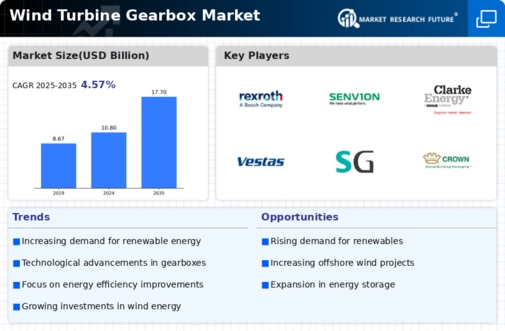
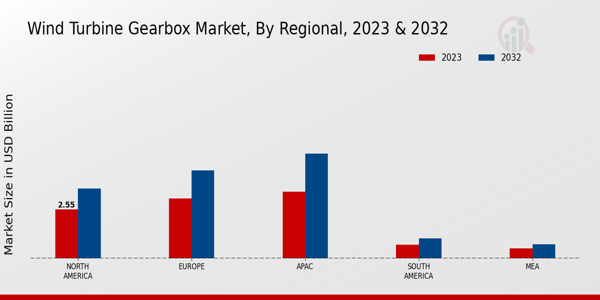
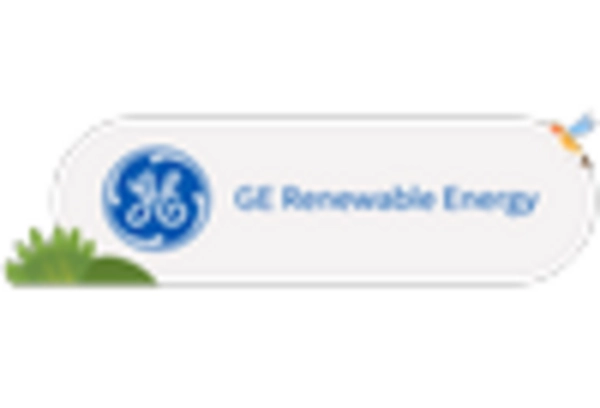
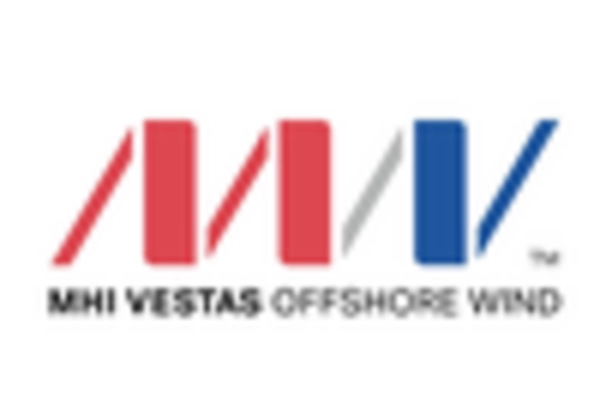
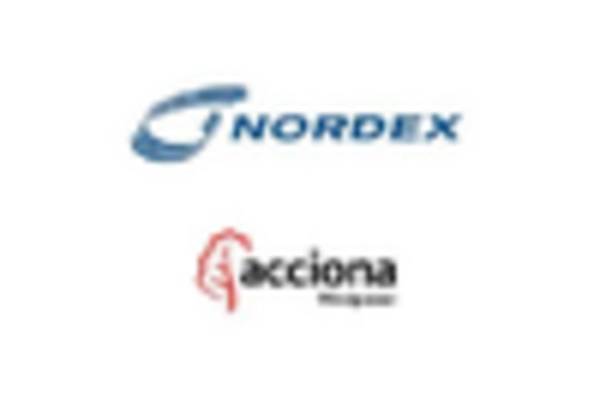
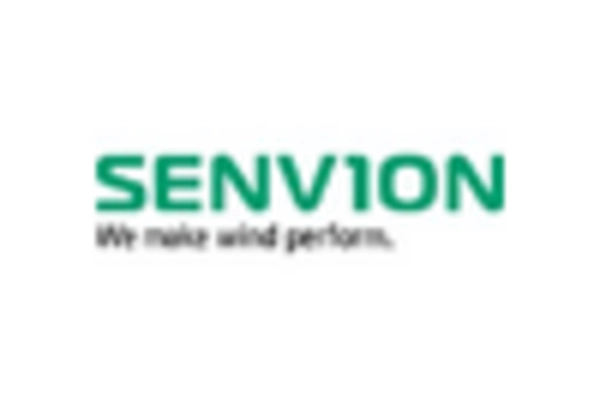
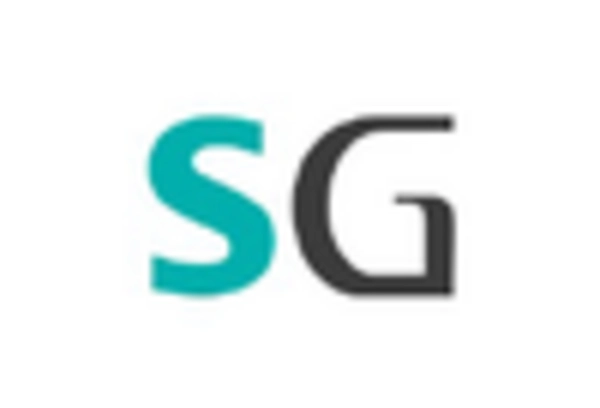
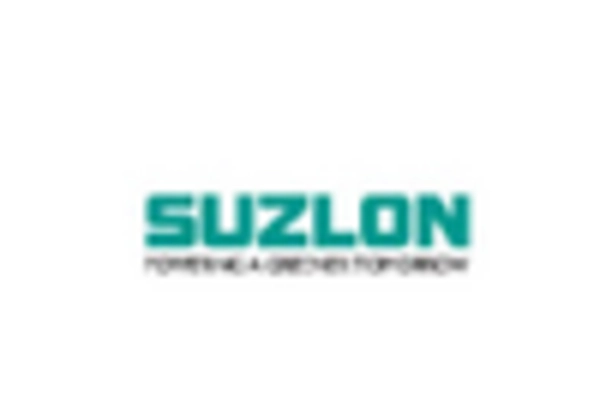

Leave a Comment